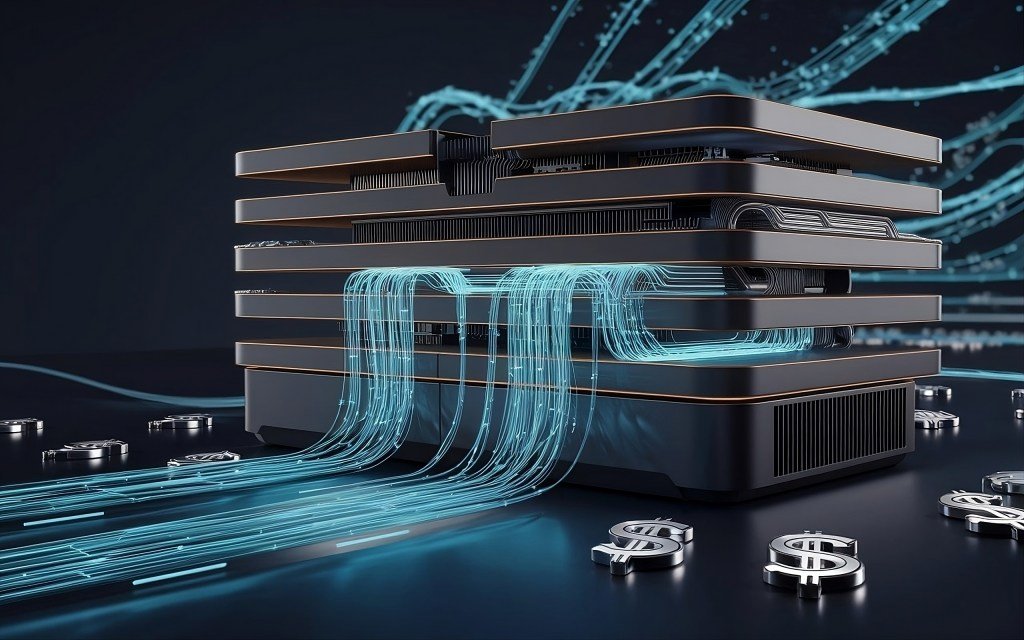As AI technologies continue to advance, graphics processing units (GPUs) have become the backbone of artificial intelligence (AI), driving large language models (LLMs) used by chatbots and various AI applications. With the prices of GPUs expected to fluctuate significantly in the coming years, businesses will need to adopt new strategies for managing these variable costs.
Industries like energy and logistics are already familiar with managing cost fluctuations. Companies in energy-intensive fields, such as mining, balance various energy sources to control expenses, while logistics companies manage transportation costs that are affected by disruptions in global shipping routes. Now, companies involved in AI must prepare for the unpredictable cost of GPUs.
Future Volatility: Understanding the Complexity of GPU Costs
One of the challenges with computing cost fluctuations is that many industries using AI—such as financial services and pharmaceuticals—have limited experience in managing variable hardware costs. However, as these industries are likely to benefit from AI, they need to adapt quickly.
Nvidia, a dominant GPU supplier, has seen its stock value soar, reflecting the high demand for GPUs that can perform complex calculations in parallel, making them ideal for training and running LLMs. Some companies even go to great lengths, like transporting Nvidia’s H100 chips in armored vehicles, to secure these high-demand processors.
Key Drivers of GPU Price Fluctuations
GPU prices are influenced by several factors. Demand is increasing rapidly as AI adoption grows. According to Mizuho, the GPU market could grow tenfold, reaching over $400 billion in the next five years. On the supply side, production is limited by factors such as manufacturing capacity and geopolitical tensions—especially as many GPUs are produced in Taiwan, a region facing potential conflict with China.
The current shortage of Nvidia chips, with waiting periods of up to six months, highlights the supply-demand imbalance. As companies integrate more AI-powered applications, managing fluctuating GPU costs will become a critical aspect of their strategies.
Effective Strategies for Managing GPU Costs
To control rising GPU expenses, some companies may consider managing their own GPU servers instead of relying on cloud providers. Although this requires upfront investment, it provides more control over usage and could lead to cost savings over time.
Another strategy is to secure defensive contracts for GPUs. Even if a company does not yet have a use case for them, purchasing GPUs now could ensure they have the necessary resources in the future, preventing competitors from monopolizing the supply.
It’s also essential to optimize the choice of GPU. Not all GPUs are created equal, and companies need to match the GPU to their specific needs. For instance, top-tier GPUs like Nvidia’s A100 or H100 are ideal for training large foundational models, while less powerful GPUs are better suited for high-volume inference tasks.
Location and Power Costs: A Key Consideration
The energy consumption of GPUs is another critical factor. Deploying GPU servers in regions with lower energy costs, such as Norway, where electricity is inexpensive, can reduce overall costs. By contrast, operating servers in areas with higher energy costs, such as the eastern United States, can significantly drive up expenses.
Balancing Cost and Quality in AI Applications
CIOs should assess the trade-offs between computing power and AI application quality. For example, lower-priority applications may require less accuracy, allowing companies to use less computing power and reduce costs. By strategically managing resource allocation, companies can optimize their overall GPU usage without compromising critical AI tasks.
Switching between cloud service providers or adopting new AI models also offers flexibility in cost management. Just as logistics companies adapt shipping routes to reduce expenses, businesses can adjust their AI infrastructure to find more cost-effective solutions. Techniques like optimizing LLM models for different use cases can also help maximize the efficiency of GPU usage.
The Challenge of Accurately Forecasting GPU Demand
Predicting GPU demand is particularly difficult given the rapid pace of AI advancements. New LLM architectures, such as Mistral’s “hybrid expert” model, aim to improve efficiency by only using parts of the model for specific tasks. Similarly, GPU manufacturers like Nvidia and TitanML are developing new techniques to boost inference efficiency.
The emergence of new AI applications, such as retrieval-augmented generation (RAG) chatbots, adds to the complexity of forecasting demand. As the technology evolves, it will be challenging for companies to predict their future GPU needs accurately.
Planning for Fluctuating GPU Costs: The Time to Act is Now
The demand for AI solutions shows no signs of slowing down. According to Bank of America Global Research and IDC, global revenue for AI-related software, hardware, and services will grow 19% annually, reaching $900 billion by 2026. While this is promising for GPU manufacturers like Nvidia, businesses must start planning now for the unpredictable nature of GPU costs.
By implementing strategies such as managing servers in-house, optimizing the type and location of GPU deployment, and learning to balance cost and performance, companies can better navigate the fluctuating landscape of GPU pricing and stay competitive in the AI-driven economy.
